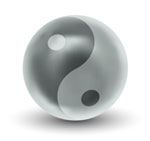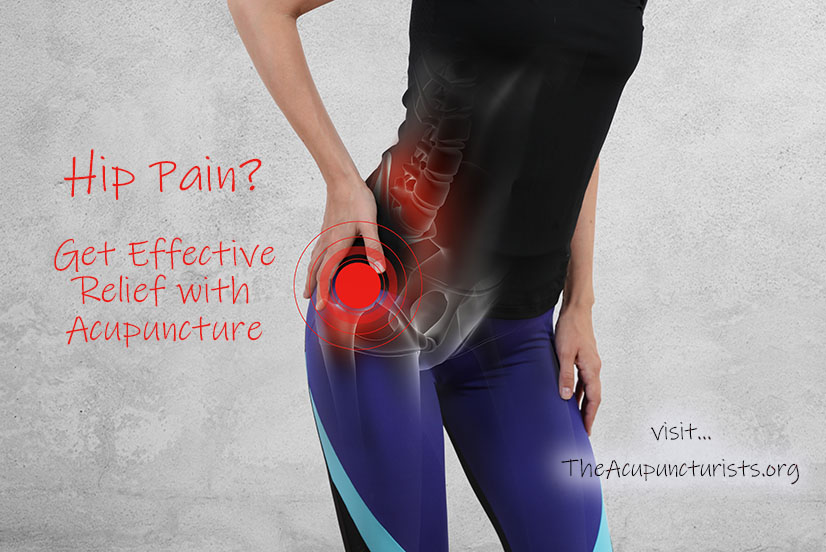By Robert Herbst AP, DOM – Margate, Florida – The leg and the pelvis connect at the hip joint. When healthy, this ball and socket joint allows free movement of the leg in any direction and makes for ample flexibility. The upper body’s weight is conveyed through the hip when a person is walking, running and standing. As such, apart from being highly flexible, this joint also ought to be substantially strong to withstand overuse on almost daily basis.
Epidemiology and common symptoms of hip pain
Hip pain refers to any pain that’s felt in and around one’s hip joint. Pain resulting from hip injuries may also be felt in other parts of the body apart from in and around the hip joint, for example at the knee, thigh or in the groin. The commonest causes of hip pain include mechanical malfunctioning of the joint, trauma resulting from intense impact as well as deep flexion that occur in sporting activities like wrestling, football and more. Repetitive motion necessitated by manual tasks can also result to hip pain due to the wear and tear happening at the joint. Fortunately there are many ways to effectively treat hip pain, Acupuncture being one of them. Before we discuss acupuncture for hip pain, let’s delve into the most commonly diagnosed conditions affecting the hip.
Commonly diagnosed conditions affecting the hip
· Arthritis – Arthritis, in particular osteoarthritis, is a major cause of hip pain and is common among aging persons as the joint experiences continued wear and tear over the years. Hip pain resulting from arthritis is usually felt at the groin as a result of stiffness in the hip joint.
· Tendinitis and bursitis – Numerous tendons at the hip bind with muscles at the joint. The tendons are highly susceptible to inflammation as a result of overuse, especially when one engages in strenuous activities. Hip joint tendinitis commonly occurs in runners due to iliotibial band syndrome. The inflammation of the fluid filled sacs known as bursae which provide cushioning at the bony parts of joints causes bursitis and this also results in hip pain.
· Fractures – Persons diagnosed with osteoporosis or low bone density are particularly susceptible to hip fractures. These fractures are normally symptomized by pain felt when straightening, lifting or standing on one’s leg.
· Hernia – Hernias are abnormal openings or defects through which body tissues or organs such as intestines can protrude. Causes of hernias are mostly unclear. Hip pain caused by hernia is normally noticed as an acute pain at the groin or a noticeable, painful protrusion.
· Gynecological issues – Women usually experience hip pain resulting from gynecological problems. When not diagnosed properly, this pain may be thought to have been caused by tendonitis / bursitis / arthritis. Most women report experiencing hip pain due to pelvic tenderness brought about by endometriosis. Some patients report referred pain from the spinal cord and back that’s felt at the hip.
Western Medical Treatments for hip pain
Hip pain resulting from strained tendons muscles, tendonitis or even osteoarthritis can be relieved by taking OTC (over-the-counter) pain medicines like Tylenol or NSAIDs (non-steroidal anti-inflammatory drugs) like Aleve and Motrin. Treatment for rheumatoid arthritis comprises of prescribed anti-inflammatory medicines like corticosteroids as well as DMARDs or disease modifying anti-rheumatic drugs such as sulfasalazine ormethotrexate.
Western treatments for hip pain may also recommend holding ice at the affected place and resting the paining joint whenever possible. Physical therapy is another treatment that is offered to help reduce hip pain and improve one’s leg flexibility and movement. In severe scenarios particularly occasioned by osteoarthritis, a patient can feel excruciating pain and the hip joint can become deformed. As such, surgery or arthroplasty is done.
Arguably, Western treatments for hip pain can be effective to ease pain and institute healing on patients. However, they don’t always work, which necessitates turning to alternative treatment. Acupuncture and Chinese Medicine have effectively been practiced for centuries to treat hip pain, shoulder pain, neck pain, back pain and other kinds of pain (Gaw et al, 1975).
It is upon this realization that many doctors in the Western world are recommending acupuncture and Chinese medicine, particularly in chronic cases. Additionally, acupuncture and Chinese medicine are nonsurgical and have helped heal many patients who have otherwise had trouble responding to other forms of treatment.
How acupuncture and Chinese Medicine can treat hip pain effectively
According to TCM (Traditional Chinese Medicine), pain and restricted movement occurs when Qi or life energy that flows throughout the body is blocked or is stagnant due to one or more reasons. When one experiences hip pain, it means that the flow of Qi is obstructed in at least one of the meridians through which Qi passes in and around the hip joint. As such, acupuncture and TCM treat hip pain by aiming to free up Qi movement at the hip.
Research has shown that the application of acupuncture treatment targeting the hip, leg and foot coupled with massage is effective in treating chronic hip pain including cases that have not been assisted by conventional medicine. A 2006 large scale study by Witt et al established that acupuncture effectively treats osteoarthritis as well as other hip joint issues.
For thousands of years, acupuncture has been the focal point of TCM. Over time, acupuncturists have perfected the art and science of precisely inserting thin needles into the skin at particular points to treat anomalies such as hip pain and other kinds of chronic pain. Indeed, acupuncture has proved to be more effective in treating various forms of pain than Western treatments (Sun, 2010). When the disturbance of Qi movement is eliminated or when a balanced flow of Qi is restored, then a person regains his or her health.
While the theory about Qi and meridians is generally shunned in Western medicine, more and more people are opting for acupuncture and TCM as many Western medical practitioners are realizing the effectiveness of acupuncture in treating acute and chronic conditions. In fact, many studies have concluded that acupuncture is an effective source of pain relief (Ernst et al, 2011: Takeda& Wessel, 1994).
Precise placement of acupuncture needles produces a signal which is carried to the brain through the spine cord. This triggers the release of transmitters known as enkephallins and endorphins that are believed to reduce pain. The anti-inflammation hormone called cortisol is also produced upon the insertion of acupuncture needles.
The Acupuncturists serve the communities of Margate, Coconut Creek, Coral Springs, Tamarac, Parkland, Deerfield Beach, and West Boca and offer free consultations daily. If you’re suffering with hip pain, we can help! Give us a call today!
Web references
- http://www.everydayhealth.com/pain-management/hip-pain/alternative-approaches.aspx
- http://www.arthritis.org/living-with-arthritis/treatments/natural/other-therapies/mind-body-pain-relief/oa-acupuncture.php
- http://www.acupuncturetoday.com/mpacms/at/article.php?id=32442
Academic references
- Ernst, E., Lee, M. S., & Choi, T. Y. (2011). Acupuncture: does it alleviate pain and are there serious risks? A review of reviews. PAIN®, 152(4), 755-764.
- Gaw, A. C., Chang, L. W., & Shaw, L. C. (1975). Efficacy of acupuncture on osteoarthritic pain: a controlled, double-blind study. New England Journal of Medicine, 293(8), 375-378.
- Takeda, W., & Wessel, J. (1994). Acupuncture for the treatment of pain of osteoarthritic knees. Arthritis & Rheumatism, 7(3), 118-122.
- Sun, P. (2010). The treatment of pain with Chinese herbs and acupuncture. Elsevier Health Sciences.
- Witt, C. M., Jena, S., Brinkhaus, B., Liecker, B., Wegscheider, K., &Willich, S. N. (2006). Acupuncture in patients with osteoarthritis of the knee or hip: a randomized, controlled trial with an additional nonrandomized arm. Arthritis& Rheumatism, 54(11), 3485-3493.

